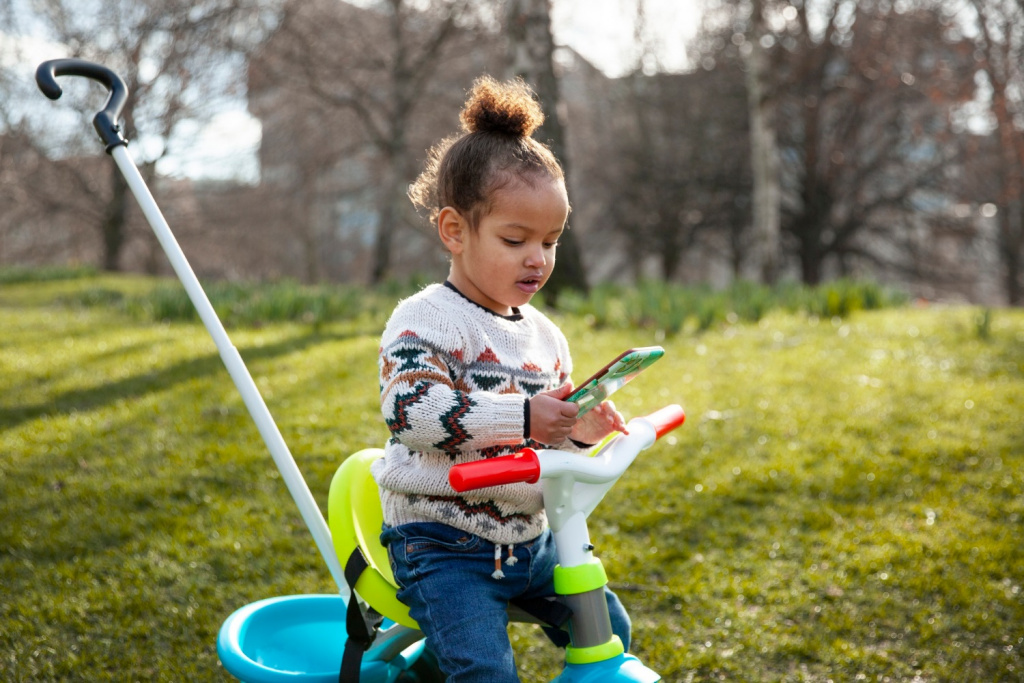
We are all so familiar with the image of a child in a pushchair holding a smartphone that we no longer find it odd. But it really is extraordinary that we have grown accustomed to taking a piece of technology that probably costs a few hundred pounds and has more power than a computer had 20 years ago, and putting it into the hands of two-year-olds. Sometimes we don't even supervise them. This is now so commonplace that companies such as John Lewis, Silver Cross and Amazon advertise trays and phone holders for pushchairs.
The World Health Organization (WHO) recommends that children under two years old should not have any screen time. They also suggest that children aged 2-4 have no more than one hour of screen time per day. The NHS advises no more than two hours per day, even for older children.
Despite this, we know that many children are exposed to technology for much longer periods. Not only are they entertained during the day while busy parents get things done, but also a tablet can be a companion during the night to pacify a wakeful child.
What are children doing when they are online?
Ofcom's 2023 report 'Children and Parents: Media Use and Attitudes' shows how digital technology impinges on children's lives. The numbers are stark:
- Almost all children aged 3-17 went online (97%) in 2022, either at home or elsewhere
- The figure is only slightly lower for 3-4-year-olds (87%)
- Just under two-fifths of 3-4-year-olds (38%) had their own profile on YouTube
- 14% had a profile on at least one other app or site
What do they do with their screen time?
- Children aged 3-4 went online mainly to watch videos (92%) and were more likely to do so than in 2021 (89%)
- YouTube was by far their most-used app (87%)
- They were more likely to use YouTube Kids (51%) than the ‘main’ YouTube site (31%)
- Cartoons, animations, mini-movies or songs were the most watched types of videos among 3-4-year-olds